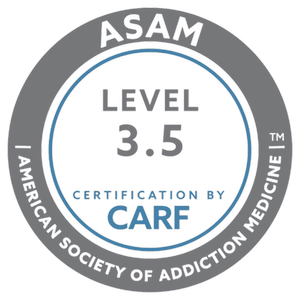Using Thought Stoppers to Manage Relapse Triggers
As a recovering addict, you will always face obstacles that challenge your sobriety. Addiction is a chronic disease, meaning addicts face lifelong challenges on their journeys through recovery.
While you can usually choose which environments you enter, you will inevitably face relapse triggers in everyday life. Even if you intentionally avoid tempting situations, you may still be exposed to people, places, or objects that remind you of using.
When we work with clients on managing relapse triggers, we teach the value of using thought stoppers. Thought stoppers are used to interrupt a negative train of thought and refocus your thinking. Consider the following reasons and practices for using thought stoppers.
Training your mind
A major aspect of addiction recovery is moving toward a healthier, clearer state of mind. One of the biggest pains of detoxing and recovery is managing your cravings and reconditioning your brain to respond to healthier stimulation.
When you’re using an addictive substance, that drug or alcohol distorts your brain’s perceptions of pleasure and rewards. Your brain becomes reliant on that harmful substance to experience any relief or pleasure.
Breaking that mental dependency is a difficult process, but it moves both your mind and body to a healthier space.You can do multiple things to help your mind recover. Treatment programs are designed to help you through withdrawal management, focusing on physical, mental, and emotional recovery.
Staying in treatment the full length of your program is crucial for allowing your mind to heal from the stress your addiction induced. Counseling, coaching, therapy, and support groups are great continuing options to share your frustrations and learn healthy ways to deal with them.
Managing your thoughts
Addictions can start from various risk factors, including family history of addiction, trauma, abuse, or neglect. Addicts may use a substance to numb painful memories or deal with depression, anxiety, or stress, which makes cutting off that substance a traumatic experience in itself.
We can guarantee it won’t be easy, but we’ve also seen that thought management can help you avoid spiraling down a negative path.As part of the healing process, we encourage people to take ownership of their thinking and catch themselves when unwanted or undesirable thoughts creep in their mind.
One practice we recommend is to wear a rubber band on your wrist. When you sense your mind going down a negative train of thought, snapping the rubber band disrupts the pleasure center of your brain, serving as a quick reminder to take captive of negative thoughts as they surface.
Using the rubber band technique reminds you that you can be in control of where your thoughts lead and be intentional about positivity.You can also gain control of your thoughts by verbalizing them. When an unwanted thought surfaces, speaking that thought out loud can remind yourself that it’s only a thought—not a reality.
Examples may include fear of losing your job or worrying you won’t make it through today. Once you say those negative thoughts out loud, let your mind switch gears to positive thinking, such as picturing yourself succeeding at work or spending time with your kids.
Thoughts become actions
Ultimately, your thoughts impact your feelings, and your feelings often dictate your actions. By starting with controlling your thoughts, you can improve your outlook on your situation and set yourself up for success.
If you sense you might be slipping into relapse, go through our addiction relapse symptoms checklist to assess your situation.
Get The Latest Updates In Drug & Alcohol Recovery News To Your Inbox
If you opt into our newsletter, we promise to respect your privacy. We don’t share your information with any other parties. Sign up to get info about the science behind addiction, the latest trends in addiction treatment, inspirational recovery stories, and much more.



